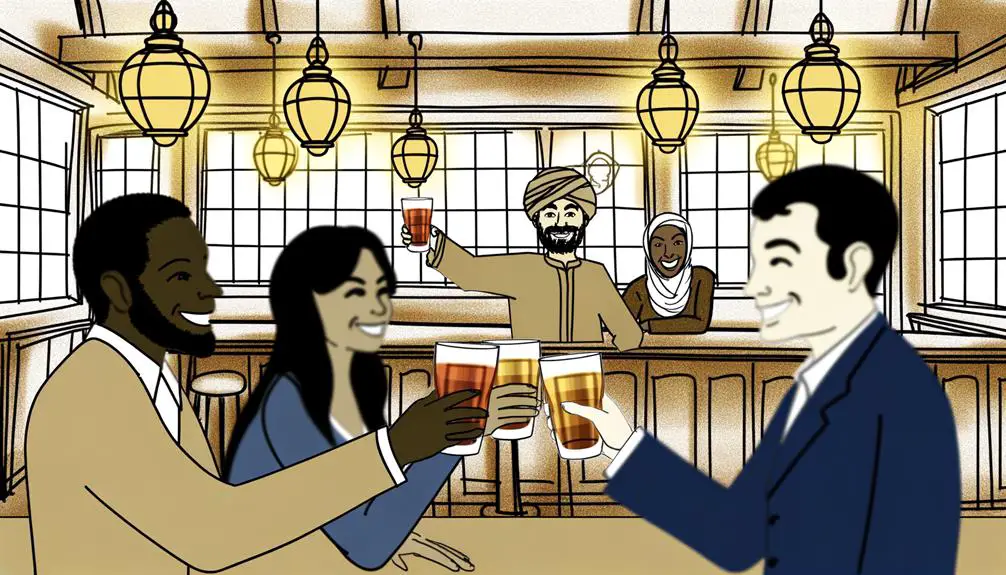In British slang, 'cheers' is more than a mere salutation at the clink of glasses; it's a multifaceted expression of gratitude and goodwill. This linguistic evolution stems from its origins in traditional toasting practices, embodying a gesture of communal appreciation and well-wishes. Today, it seamlessly integrates into daily dialogue, straddling the domains of digital communication and casual conversation. It's a mark of English linguistic shifts, reflecting a blend of formality and casualness tailored to context. Regional differences further enrich its usage, showcasing a spectrum of meanings across the UK. Exploring its various applications reveals the dynamic nature of 'cheers' within English vernacular, hinting at broader cultural practices and etiquettes.
Key Takeaways
- 'Cheers' in British slang commonly means 'thank you.'
- It is used to express gratitude in casual conversations.
- Beyond toasting, 'cheers' serves as a polite sign-off in emails or messages.
- The term reflects British cultural etiquette and linguistic shifts.
- 'Cheers' can also mean 'goodbye' in some regional contexts.
Origins of "Cheers"
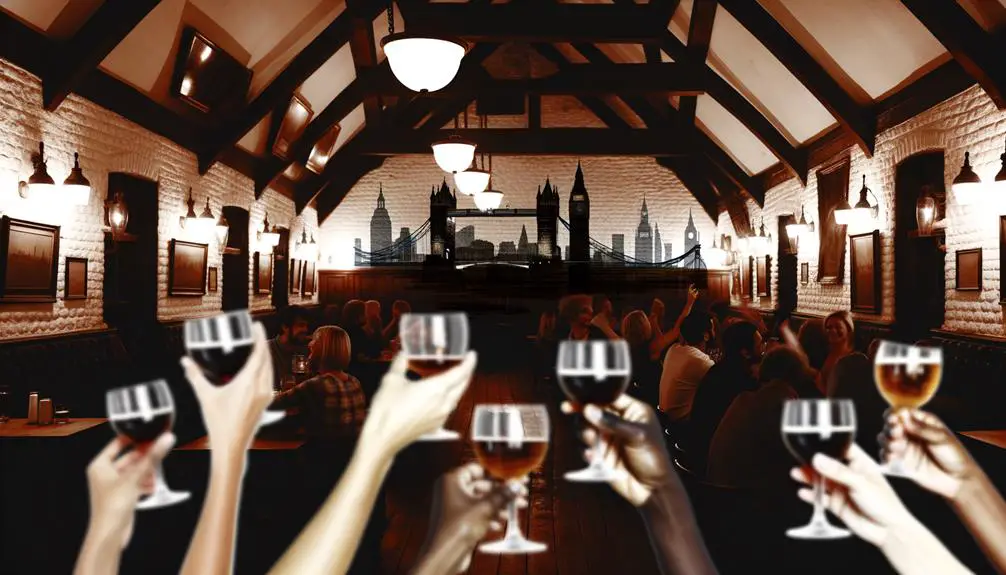
The term 'cheers' has its roots deeply embedded in the social fabric of British culture, originating as a gesture of goodwill and camaraderie. You'll find its essence exceeds mere vocabulary, exploring into the world of social customs and linguistic evolution. The etymology debates surrounding 'cheers' offer a fascinating glimpse into how language changes over time, influenced by societal changes and interactions. Scholars suggest its linguistic roots trace back to the Old French word 'chiere,' meaning face or countenance, which evolved into an expression of encouragement or good mood.
This historical perspective underscores the term's journey from a physical expression to a verbal symbol of positive sentiments. It's intriguing to ponder how 'cheers' encapsulated the shift from visual representation to spoken word, signifying joy, approval, or even gratitude. This evolution reflects the dynamic nature of language, where words adapt to the contours of cultural shifts. As you explore further into the origins of 'cheers,' it becomes apparent that its current usage as a casual form of farewell or thanks in British slang is the tip of an etymological iceberg, hinting at rich layers of history and social interaction beneath.
Traditional Toasting Use
Exploring further, it's evident how 'cheers' found its distinguished place in the domain of traditional toasting, a practice steeped in history and cultural significance. This term, transcending beyond mere vocabulary, embodies a rich tapestry of global traditions and celebration customs. In the context of British culture, 'cheers' serves not just as a word but as a ritualistic expression, encapsulating moments of joy, camaraderie, and milestone celebrations.
Delving deeper, it's clear that the act of toasting, with 'cheers' as its vocal harbinger, is not merely about the clinking of glasses but about the communal acknowledgment of gratitude, honor, and well-wishes. This tradition, deeply rooted in ancient customs, has evolved over centuries, yet its essence remains unchanged. The British adaptation, characterized by its succinct yet profound delivery, mirrors the societal values of understatement and affability.
Through a scholarly lens, 'cheers' in the context of traditional toasting is a fascinating study of how language evolves with culture. It highlights how a simple term can carry the weight of history, uniting people across generations. Analyzing its use in toasting reveals a microcosm of celebration customs, offering insights into the collective psyche and social norms of the British people.
"Cheers" as Thanks
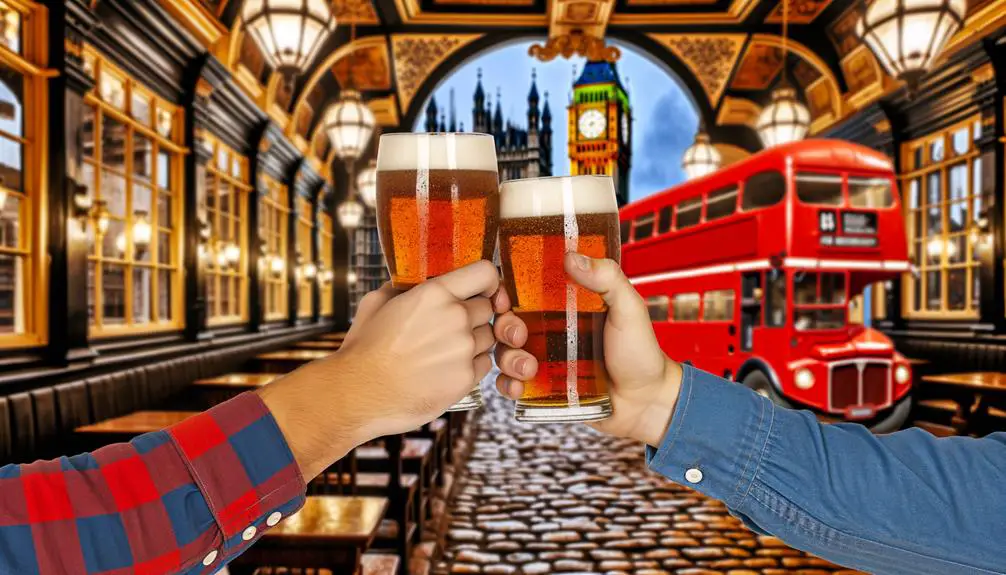
Within the domain of British vernacular, 'cheers' transcends its celebratory origins, doubling as a term of gratitude, offering a window into the intricate relationship between language and cultural etiquette. This evolution from a toast to a signifier of thanks reflects a broader linguistic shift, where words stretch and adapt to fulfill new social functions. In this capacity, 'cheers' has become emblematic of gratitude gestures within various appreciation contexts, assuming a role that's both informal and sincere.
The application of 'cheers' as a form of thanks underscores a cultural predilection for understatement and affability. It's a linguistic marker that signals appreciation without the need for grandiose expressions, embodying the British penchant for subtlety. This versatility allows 'cheers' to function across a spectrum of scenarios, from acknowledging a server in a restaurant to expressing thanks for a favor among friends.
Analyzing this usage within appreciation contexts reveals much about social norms and the values that underpin British communication. Gratitude gestures, such as 'cheers', become tools for nurturing social bonds and reinforcing community cohesion. They exemplify how language evolves in tandem with societal values, encapsulating the essence of politeness, gratitude, and mutual respect in British culture.
Casual Conversations
In casual conversations, 'cheers' often surfaces as a multifaceted expression, weaving into the fabric of dialogue with ease and showcasing its adaptability in everyday linguistic exchanges. This term transcends its literal connotations, embedding itself within a spectrum of conversational nuances and greeting etiquette that characterize British communication. Its utility extends beyond mere acknowledgment, functioning as a versatile tool in the arsenal of informal speech.
Analyzing its role, one discerns how 'cheers' embodies the subtleties of social interaction. It's a linguistic chameleon, capable of expressing gratitude, agreement, or parting salutations without the rigidity of formal language. This elasticity allows speakers to navigate various social contexts with linguistic economy, employing a single word to fulfill multiple communicative intents. The term's prevalence in casual discourse underscores a broader cultural preference for understatement and efficiency in verbal exchange, hallmarks of British conversational style.
Furthermore, 'cheers' illustrates the dynamic nature of greeting etiquette, adapting to the evolving landscape of informal speech. Its usage signals a blend of camaraderie and politeness, reinforcing social bonds through shared linguistic norms. In the domain of casual conversations, 'cheers' stands as a reflection of the intricate dance of words that defines human interaction, highlighting the complexity and richness of conversational nuances in British English.
In Texts and Emails
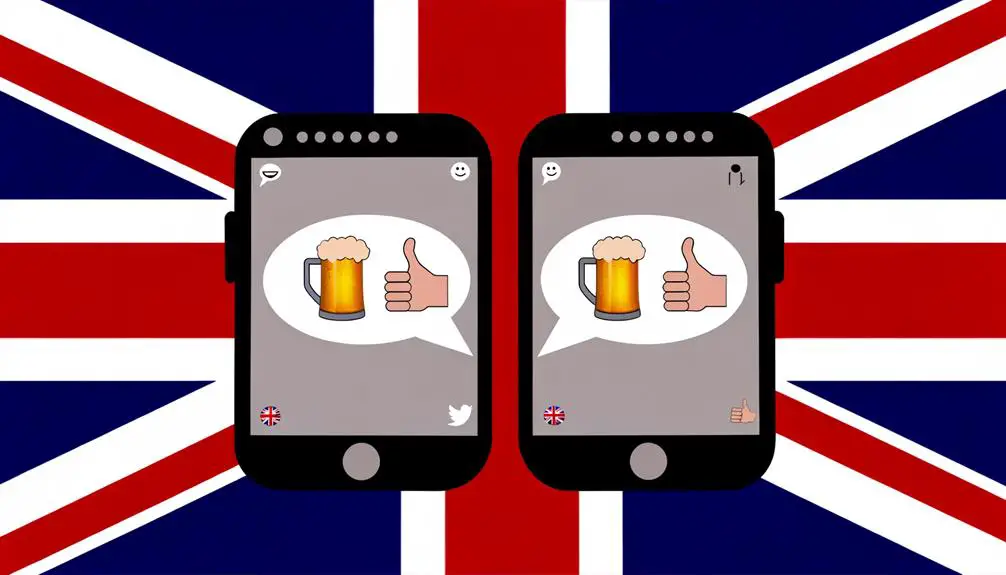
As we examine the adaption of 'cheers' into digital communication, it's evident that its versatility extends to the areas of texts and emails, reflecting shifts in linguistic practices. This single word, rooted in informal verbal exchanges, has seamlessly shifted into the domain of digital communication, embodying both email etiquette and digital politeness. Its use in electronic correspondence serves as a lightweight sign-off, a friendly acknowledgment, or even a form of gratitude, illustrating the fluid boundaries between professional and personal tones in digital communication.
The incorporation of 'cheers' into emails and texts showcases an evolution in the way we convey courtesy and warmth in a medium often criticized for its lack of personal touch. It's a demonstration to the dynamic nature of language, especially English, in absorbing and repurposing expressions to fit new contexts. In this digital age, where communication is instantaneous and often devoid of physical cues, the choice of words becomes paramount in conveying tone and intent. 'Cheers' emerges as a versatile tool, straddling the line between formality and informality, enabling senders to express a range of sentiments—from appreciation to casual farewell—with succinct elegance. This linguistic shift not only reflects changing norms in digital etiquette but also underscores the adaptability of language in the face of evolving modes of interaction.
Variations Across the UK
As you explore the linguistic landscape of 'Cheers' across the UK, you'll discover that its usage and connotations vary greatly between regions, especially between the North and South. This distinction is not just anecdotal but rooted in the deep-seated cultural identities and historical dialects that shape how language is used and perceived. Analyzing these regional differences provides insight into the broader complexities of British slang and its social implications.
Regional Cheers Meanings
Across the UK, you'll find that the word 'cheers' encompasses a myriad of meanings, each deeply rooted in the region's specific cultural and linguistic nuances. This diversity reflects not only the local dialects but also the unique social practices within each community. To better understand this, consider the following:
- Holiday Expressions: In some regions, 'cheers' is integral to festive greetings, closely linked to local holiday customs.
- International Equivalents: Areas with strong international ties often blend 'cheers' with similar expressions from other languages, creating a rich tapestry of shared cultural references.
- Community Gatherings: The term can signify appreciation or thanks, especially in communal settings.
- Ceremonial Uses: In certain locales, 'cheers' holds a ceremonial value, marking significant events or changes.
This regional variation enriches the understanding of 'cheers', offering insight into the UK's complex cultural landscape.
Slang Differences: North Vs South
Exploring further, we'll notice that the variations in the usage of 'cheers' between the North and South of the UK illustrate the diverse linguistic landscape of the region. Dialect influences and pronunciation variations play a significant role in this diversity.
| Aspect | North | South |
|---|---|---|
| Pronunciation | Broader vowels, softer tones | Crisper consonants, clearer diction |
| Usage Frequency | More prevalent in casual settings | Used more selectively |
| Context | Often denotes thanks or goodbye | Primarily used for toasting or thanks |
| Tone | Warmer, friendlier | Slightly more formal |
| Influence | Strong Celtic and Viking roots | Heavily influenced by London's linguistic trends |
These variations not only show the rich tapestry of British English but also how regional identities shape language.
Social Media Influence

How has social media reshaped the usage and perception of British slang terms like 'cheers' among global audiences? The transformation is profound, with platforms like Twitter, Instagram, and TikTok serving as catalysts for the globalization of slang. Here, the focus is on:
- Hashtag Trends: By tagging their posts with #cheers, users not only celebrate moments but also propagate the British term across cultures, blurring geographical and linguistic boundaries.
- Emoji Interpretations: Emojis paired with 'cheers' in posts can vary, from clinking glasses to smiling faces, offering a visual dimension to understanding and embracing the term beyond its traditional context.
- Viral Content: When influencers or celebrities use 'cheers' in their posts, it gains international attention, encouraging fans worldwide to adopt the term in their digital and real-life vocabulary.
- Online Communities: Forums and social media groups dedicated to British culture help in educating global users about the nuanced meanings of 'cheers,' ensuring its respectful and accurate use.
This digital dissemination has not only expanded the reach of British slang but has also enriched global communication, offering a shared language that transcends borders. Social media, hence, plays a pivotal role in the living lexicon of slang, continuously shaping and reshaping meanings and perceptions.
Misunderstandings Abroad
In understanding the intricacies of 'Cheers' in British slang, you'll encounter the complexities of cultural interpretation differences and common language confusions when the term crosses borders. These linguistic nuances can lead to significant misunderstandings abroad, as what's seen as a casual form of gratitude or salutation in the UK might not translate directly in other cultural contexts. It's essential to grasp these subtleties to avoid potential social faux pas and to appreciate the richness of language use in different settings.
Cultural Interpretation Differences
Traversing the nuanced landscape of British slang, you'll often find that 'cheers' carries a breadth of meanings that may lead to misunderstandings abroad. This divergence stems from both gesture implications and the expression's evolution over time. To navigate these cultural interpretation differences, consider the following:
- Gesture Implications: In the UK, 'cheers' might not only signify gratitude but can also be used as a casual farewell.
- Expression Evolution: The term has evolved to embody a versatile range of uses, from thanking to acknowledging.
- Contextual Sensitivity: Understanding the situation is key to deciphering the intended meaning.
- International Variance: Other cultures may not recognize the informal uses of 'cheers,' expecting it solely in toasting scenarios.
These facets underscore the complexity of translating British slang accurately across cultures, highlighting the importance of context and adaptability in communication.
Common Language Confusions
Exploring foreign territories often leads to common language confusions, as words and phrases may carry significantly different meanings or connotations across cultures. You'll find that language barriers and interpretation challenges can complicate even the simplest interactions. For instance, the word 'cheers' in British slang, commonly understood as a form of gratitude or a casual goodbye, might be misconstrued abroad as solely a drinking salutation. This highlights the importance of understanding the nuances and context behind local expressions. Such misunderstandings underscore the complexity of language as a cultural tool, where words are imbued with historical and social significance. Navigating these subtleties requires patience and an openness to learn, as you adapt to new linguistic landscapes and bridge the gap between differing interpretations.
Evolving Usage Patterns
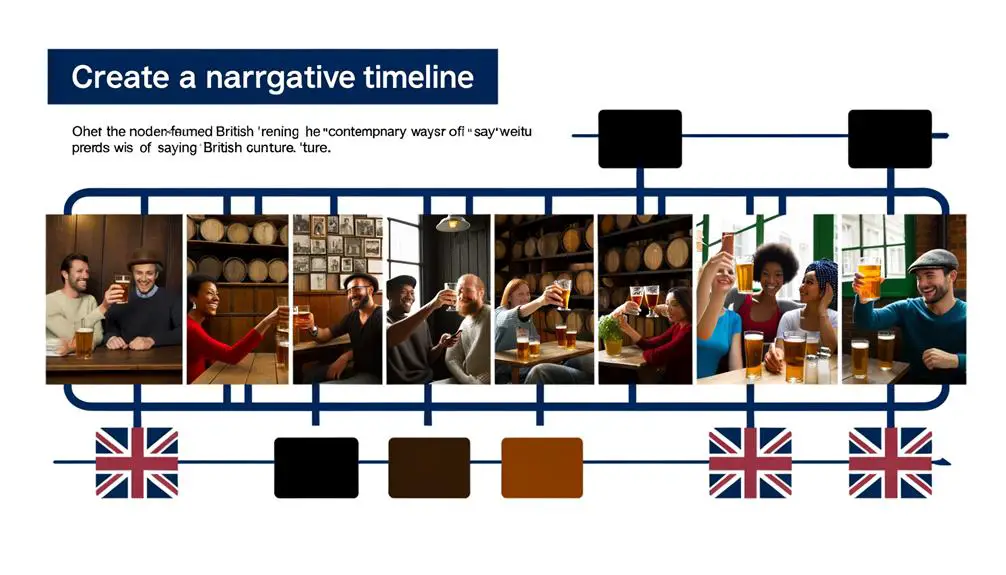
You'll find that the usage patterns of 'cheers' in British slang have undergone significant changes, reflecting broader linguistic and cultural shifts. This transformation can be attributed to several factors, prominently including global influences and linguistic evolution. Such changes have not only diversified the contexts in which 'cheers' is used but also enriched its connotations, offering a fascinating case study in the dynamics of language change.
Here's how the usage of 'cheers' has evolved, marked by key trends:
- Increased Informality: Initially reserved for toasts, 'cheers' now permeates everyday language, signifying gratitude or farewells.
- Digital Communication: The rise of text-based communication platforms has seen 'cheers' being adopted for its brevity and friendliness.
- Cultural Exchange: Globalization has facilitated the cross-pollination of linguistic expressions. 'Cheers' has been embraced by non-native speakers, often blending with local vernaculars.
- Media Influence: British television and film exports have popularized 'cheers', embedding it within international lexicons and altering its traditional usage patterns.
This linguistic evolution reflects an adaptive vernacular that mirrors societal trends, technological advancements, and the fluid nature of cultural identity. As you explore further into British slang, understanding these shifts offers rich insight into the intricate web of language and its continuous transformation.

